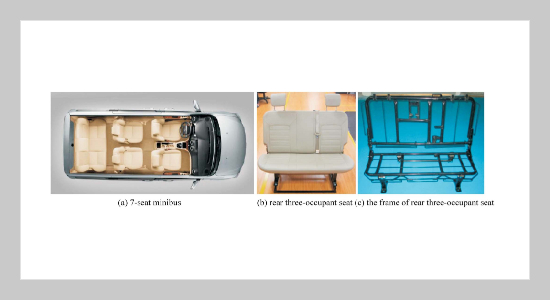Youming Tang This email address is being protected from spambots. You need JavaScript enabled to view it.1, Ting Wang1, Guanhua Xiao1, Leyu Wang2 and Jianzhou Chen3 1Fujian Institute of New Energy Vehicle and Safety Technology, Xiamen University of Technology, 361024 Xiamen, P.R. China
2Center for Collision Safety and Analysis, George Mason University, 22030 Fairfax, USA
3Xiamen Gold Dragon Automotive Seat Ltd, 361022 Xiamen, P.R. China
Received:
April 14, 2017
Accepted:
January 16, 2018
Publication Date:
June 1, 2018
Download Citation:
||https://doi.org/10.6180/jase.201806_21(2).0009
To estimate the strength of rear seat which seated three occupants in frontal crash impacted by the displacement of luggage, a finite element (FE) model of rear seat of a minibus seated seven occupants was established. Firstly, the FE model of rear seat was simulated and validated by quasistatic test, according to the China regulation GB14167-2013. Secondly, based on above model, a computer aided engineering (CAE) analysis of rear seat was conducted under three different loading deceleration pulse of a rigid impact block, according to the requirements of China regulation GB15083-2006 and Appendix F. The simulation results showed that the rear feet structure of rear seat has been higher risk of fracture. Finally, three schemes was selected to comparative analyze under the same load pulse curves. The rear feet thickness was set as 3 mm, 4 mm and 5 mm respectively. The results showed that, if rear feet thickness was a certain value, the higher the peak of deceleration pulse, the greater the effective plastic strain of minibus rear seat. If the peak value of deceleration pulse was a certain value, the greater thickness of rear feet, the smaller the effective plastic strain of minibus rear seat. Hence, the priority scheme meet the cost consideration is 4 mm thickness of rear seat.ABSTRACT
Keywords:
Bus Safety, Vehicle Seat, Frontal Crash, Luggage Impact, CAE
REFERENCES
















